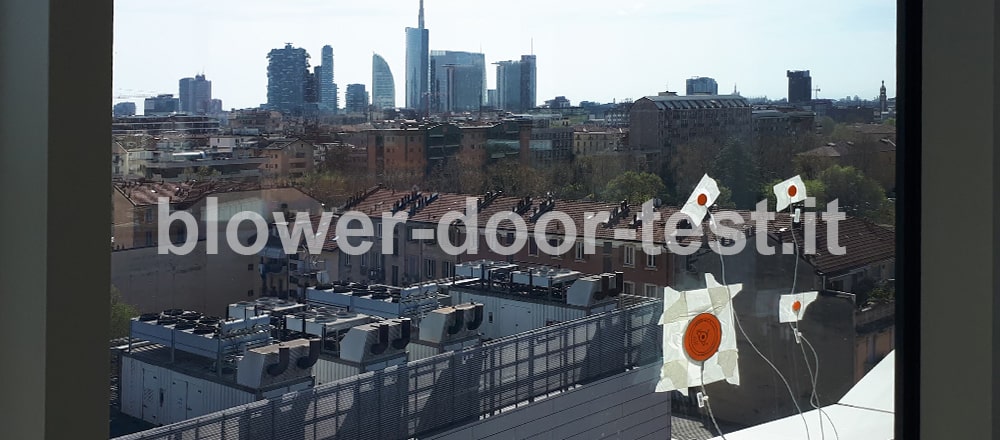We carry out the thermal conductivity field test of the building envelope through on-site heat flow measurement, according to the UNI ISO 9869-1:2015 standard.

Thermal conductivity field test: aim of the test
The thermal conductivity field test is a test that allows to measure the speed of the heat flow that passes through the building envelope. The test therefore allows to accurately estimate the degree of thermal insulation of the individual components of the building envelope.
On-site heat flow measurement on building envelopes allows these data to be identified without demolition or disassembly, making it a non-invasive and non-destructive field test.
We also perform the test as part of the ongoing tests for LEED® certification.
Thermal conductivity field test: how we do it
We carry out the thermal conductivity field test by installing plates with temperature and thermal flow sensors applied to the two sides of the element to be analysed, connected to a logger for data recording.
The two plates detect the thermal flow that passes through the element under analysis according to the physical principle of thermocouples. We carry out the test according to the running average method.
The on-site heat flow measurement is performed by us with state-of-the-art instrumentation and level II certified operators (UNI EN ISO 9712).
Thermal conductivity field test: reference standards
We carry out the thermal conductivity field test according to the UNI ISO 9869-1:2015 standard.
Thermal conductivity field test is conducted following the indications provided in the standard: equipment to be used, calibration procedure, installation procedure and data measurement and analysis procedures.
Thermal conductivity field test: fields of application
On-site heat flow measurement is particularly suitable for measuring transmittance of completed and in-use buildings.
On-site heat flow measurement is also suitable for investigating various elements of the building envelope. It is in fact possible, with this test, to measure the thermal transmittance of opaque and glazed envelopes.
Contact us for more info Request a free quote
About us:
